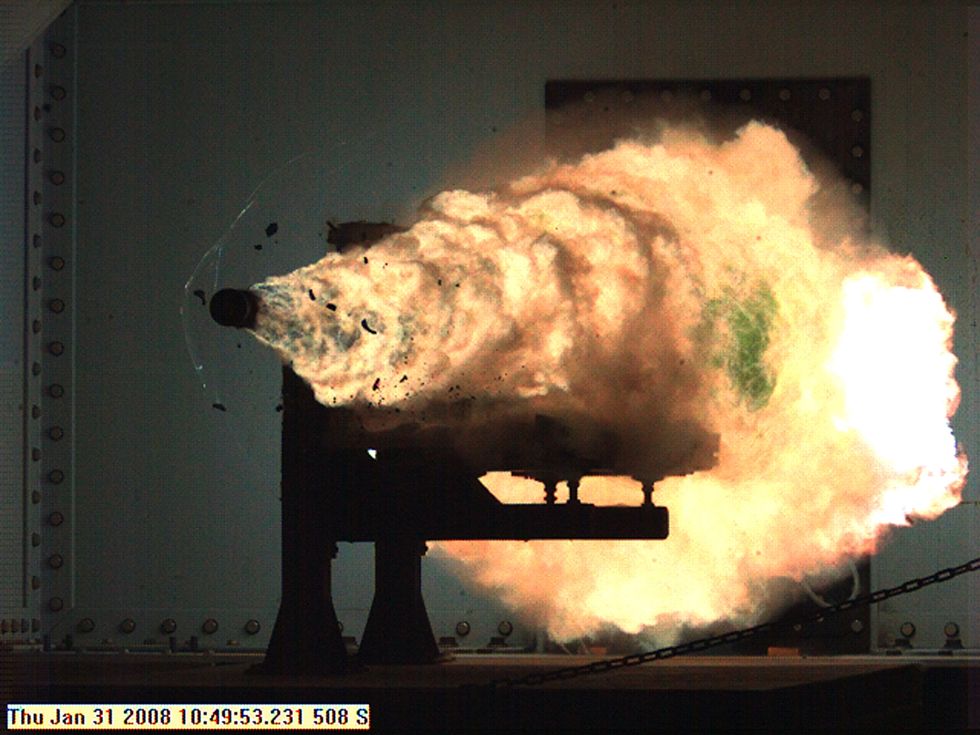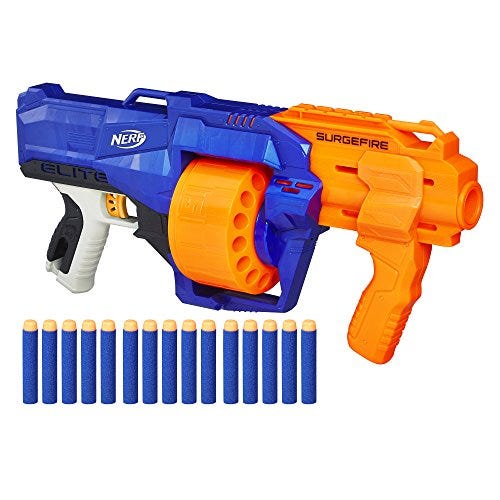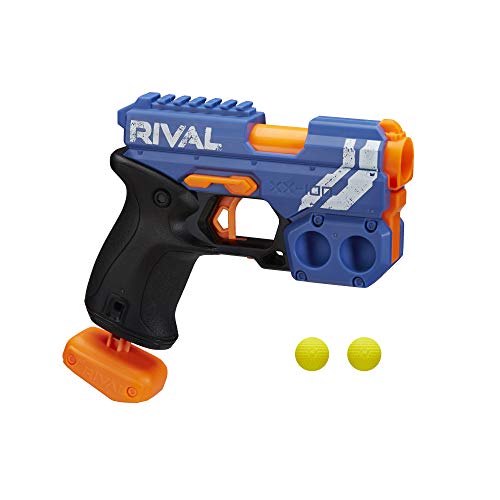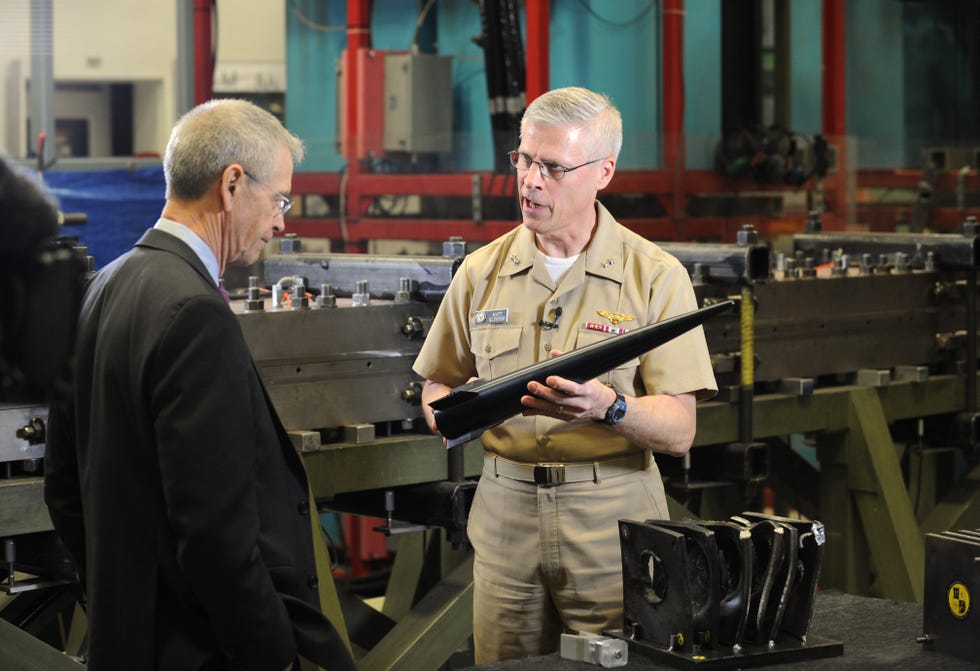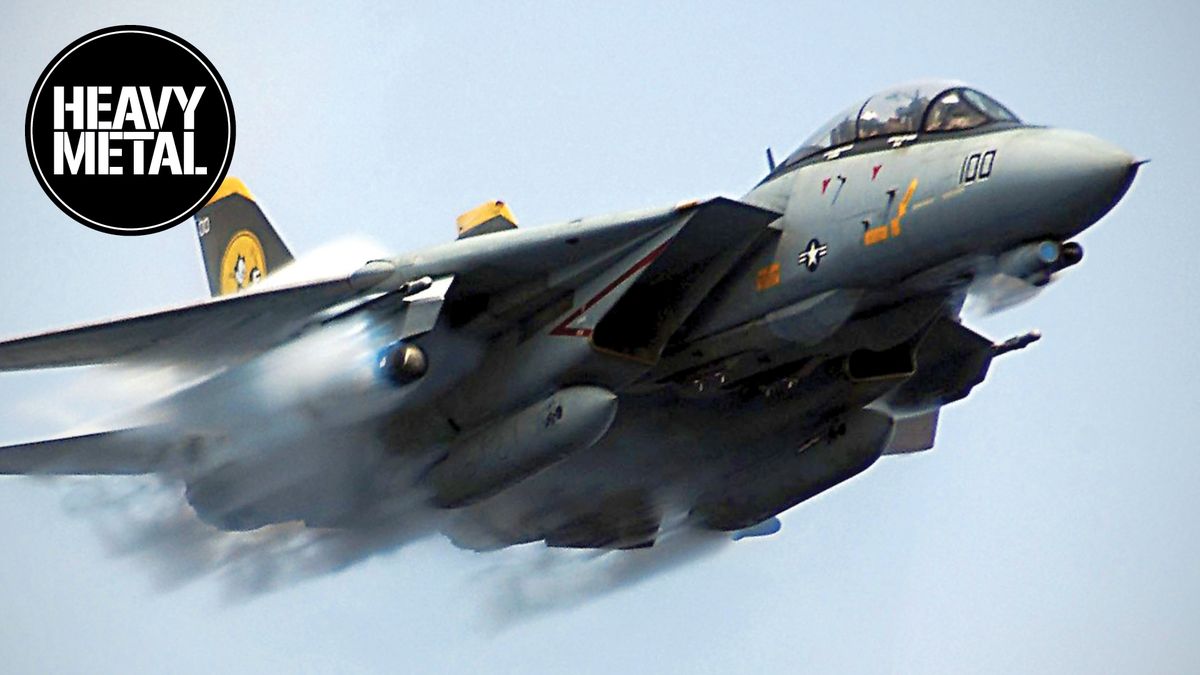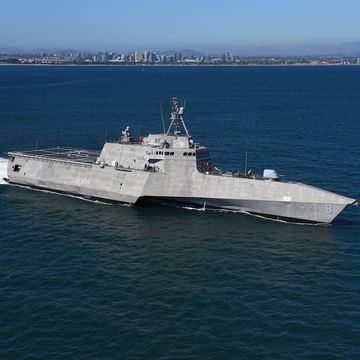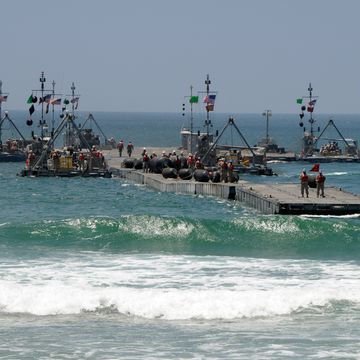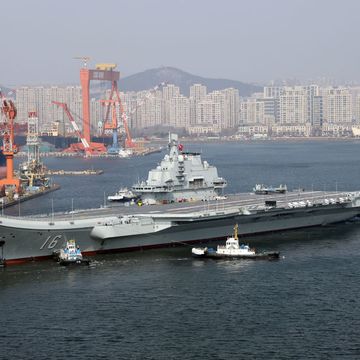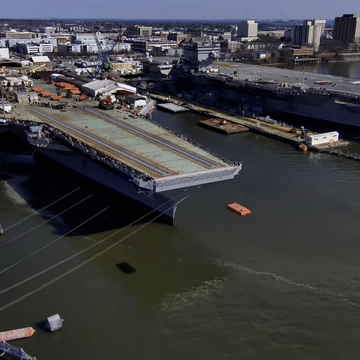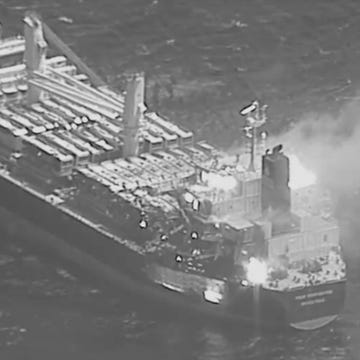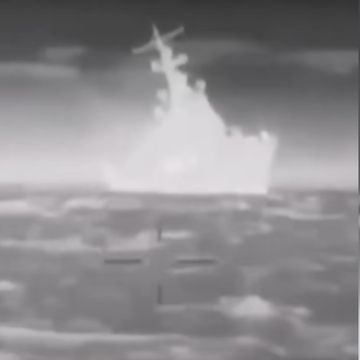- The U.S. Navy has spent $500 million developing a working railgun.
- Now that the weapon works, there are no plans to make it an operational weapon system.
- The service is instead pushing a new hypervelocity projectile it can fire from existing guns.
The U.S. Navy’s $500 million electromagnetic railgun—capable of slinging projectiles at hypersonic speeds—lacks funding and has no coherent plan to deploy on warships. The Navy is instead pursuing an offshoot of the railgun, a hypervelocity projectile it can fire from existing gun systems.
➡ You love badass military tech. So do we. Let's nerd out over this stuff together.
The electromagnetic railgun (EMRG) is a weapon that uses electricity instead of gunpowder to send projectiles downrange. Railguns use magnetic fields created by high electrical currents to accelerate a projectile to Mach 6, or 5,400 miles an hour. The velocity is sufficient to give the EMRG an effective range of 110 nautical miles, or 126 miles on land.
The Office of Naval Research began development of the gun in 2005, and by 2012 a technology demonstrator was firing projectiles at Naval Surface Warfare Center Dahlgren Division in Virginia. In 2015, the program was apparently doing so well the Navy announced plans to test the weapon from the USNS Trenton, an Expeditionary Fast Transport. In 2017, the Navy released a video of the Dahlgren gun firing multi-shot salvos.
In the years since EMRG, rather than picking up even more steam (or megajoules), has seemingly slowed down to nothing. The service requested just $9.5 million in the 2021 defense budget for railgun-based research and moved the gun to White Sands Missile Range in New Mexico, where it continues to undergo launch testing. Task and Purpose reports the railgun is technically complete, but the service is also developing a technological offshoot, the hypervelocity projectile (HVP). The HVP is the same projectile developed for the EMRG but modified to fire from traditional gunpowder-based guns.
The Best Nerf Guns, Just Because
The HVP is designed to fit in the U.S. Navy’s 127-millimeter deck guns. The projectile has a top speed of Mach 3 from a chemical energy gun—only half the speed as from an EMRG—but still an improvement over current 127-millimeter projectiles. The Navy believes the HVP could be used for long-range strike missions against land targets, against aircraft and missiles, and against enemy warships. The guided-missile destroyer USS Dewey fired 20 HVP projectiles during the 2018 RIMPAC naval exercises, the first known use of the new weapons at sea.
One huge advantage HVP has over the railgun: there are already more than a hundred HVP launchers in service. The Navy has approximately 120 Mk. 45 guns in operation, two on each Ticonderoga-class guided missile cruiser and one each on the Arleigh Burke-class guided missile destroyers. Deploying HVP to the fleet will give these ships increased capabilities, which is a lot cheaper than building new ships with railguns. The technology is also available for larger 155-millimeter projectiles, potentially giving the two Advanced Gun Systems on the Zumwalt-class warships ammunition for engaging enemy targets.
A new warship, the large surface combatant, is scheduled to eventually replace the Ticonderoga-class cruisers. The Navy plans to buy the first of these ships in the late 2020s. The Navy is tight-lipped about what new technologies will be fitted to the large surface combatant. Members of Congress, Task & Purpose reports, are pushing the service to add the railgun to the list.
Integrating the new hypervelocity projectile with the fleet while equipping the next generation surface warship with the railgun is a best of both worlds solution. HVP, once fully developed, could become a key weapon system of the fleet today while the electromagnetic railgun could become a key weapon system of the fleet tomorrow.
The U.S. isn’t the only country working on electromagnetic railguns. In 2018, a railgun prototype was sighted on the bow of the Chinese Navy landing craft Haiyangshan. Haiyangshan, aka the “Yangtze Sea Monster,” is indeed sporting a railgun but we don’t know how effective the weapon is, how close to operational status it is, and if the railgun has even been fired yet.
Now Watch This:

Kyle Mizokami is a writer on defense and security issues and has been at Popular Mechanics since 2015. If it involves explosions or projectiles, he's generally in favor of it. Kyle’s articles have appeared at The Daily Beast, U.S. Naval Institute News, The Diplomat, Foreign Policy, Combat Aircraft Monthly, VICE News, and others. He lives in San Francisco.

